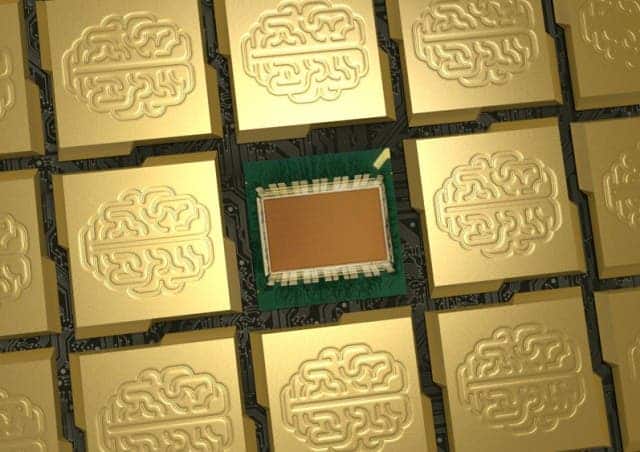
The brain of complex organisms, such as humans but just as well other primates or even mice, is very difficult to emulate with today’s technology. IBM is moving things further in this direction after it announced the whooping features of its new brain-like chip: one million programmable neurons and 256 million programmable synapses across 4096 individual neurosynaptic cores, all made possible using 5.4 billion transistors. TrueNorth as it’s been dubbed, looks amazing not just because of its raw computer power – after all, this kind of thing was possible before, you just had to build more muscle and put more cash and resources into the project – but also because of the tremendous leap in efficiency. The chip, possibly the most advance of its kind, operates at max load using only 72 milliwatts. That’s 176,000 times more efficient than a modern CPU running the same brain-like workload, or 769 times more efficient than other state-of-the-art neuromorphic approaches. Enter the world of neuroprogramming.
[ALSO READ] The most complex human artificial brain yet

The coronation of a six-year old IBM project, partially funded by DARPA, TrueNorth made its first baby steps in an earlier prototype. The 2011 version only had 256 neurons, but in between the developers made some drastic improvements like switching to the Samsung 28nm transistor process. Each TrueNorth chip consists of 4096 neurosynaptic cores arranged in a 64×64 grid. Like a small brain network that communicates with other networks, each core bundles 256 inputs (axons), 256 outputs (neurons), SRAM (neuron data storage), and a router that allows for any neuron to transmit to any axon up to 255 cores away. In total, 256×256 means each core is capable of processing 65,536 synapses, and if that wasn’t crazy enough IBM already built a 16-chip TrueNorth system with 16 million neurons and 4 billion synapses.
[ALSO] New circuitboard is 9,000 times more efficient at simulating the human brain than your PC
By now, some of you may be confused by all these technicalities. What do these mean? Why should you care, for that matter? The ultimate goal is to come to an understanding, complete and absolute, of how the human brain works. We’re far off from this goal, but we need to start somewhere. To run complex simulations of deep neural networks you need dedicated hardware that can be up to the job, preferably closely matching organic brain parallel computation. Then you need software, but that’s for another time.
Of course, there’s also a commercial interest. IBM is in with the big boys. They’ve constantly been on the forefront of technology for decades and people managing IBM know that big data interpretation is huge slice of the global information pie. Watson, the supercomputer that demonstrated it can win against Jeopardy’s top veterans, is just one of IBM’s big projects in this direction – semantic data retrieval. Watson’s nephews will be ubiquitous in every important institutions, be it hospitals or banks. Expect TrueNorth to play a big part in all of this, running from the inside to help the world grow faster on the outside.
More details can be found in the paper published in the journal Science.


